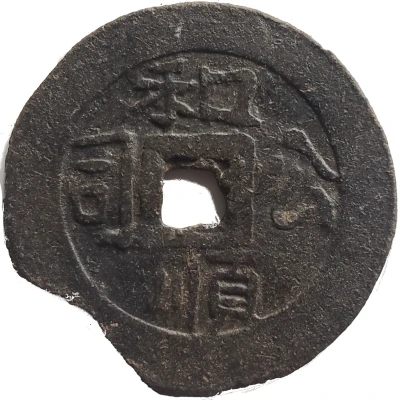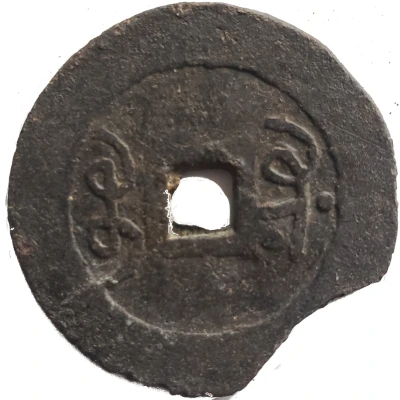


© Micheal Linke
1 Cash - Heshun Kongsi republics ND
| Tin (Lead, Tin, Pewter) | 5.3 g | 31 mm |
| Issuer | Kongsi Federation (Indonesian States) |
|---|---|
| Type | Standard circulation coin |
| Years | 1776-1854 |
| Value | 1 Cash |
| Composition | Tin (Lead, Tin, Pewter) |
| Weight | 5.3 g |
| Diameter | 31 mm |
| Thickness | 1.6 mm |
| Shape | Round with a square hole |
| Orientation | Medal alignment ↑↑ |
| Demonetized | 1854 |
| Updated | 2024-10-05 |
| Numista | N#283067 |
|---|---|
| Rarity index | 97% |
Reverse
Corrupted Manchu script similar to contemporary Qing dynasty coins, Two Manchu words (read vertically) separated by the hole. Possibly modeled on Boo-Gui
Script: Mongolian / Manchu
Lettering: ᠪᠣᠣ ᡤᡠᡳ
Unabridged legend: Boo-Gui
Edge
Plain
Comment
The Chinese characters on the coins display a considerable degree of variation and many subtypes exist. The Catalogue of Coins in the Ethnographical Museum lists 33 gongsi coins, and other varieties continue to turn up.The Fosjoen (Heshun) Federation was formed in 1776 when fourteen smaller gongsis from around Monterado in southwestern Borneo united into a single federation. The federation's leading members were the Samtiaokioe Gongsi, which controlled mining sites to the north of Monterado, and the Thaikong Gongsi, which controlled sites to the west and southwest of Monterado.
The absence of any other inscriptions might indicate that these coins were issued before the confederation was dominated by the Dagang Gongsi in 1837. The Heshun Gongsi Federation ended with the surrender of the Da Gang Gongsi to the Dutch in July, 1854. After the surrender the majority of the gongsi cash were melted down.
A paper which covers the Gongsi of southwestern Borneo has been published in the Numismatic Chronicle, London 1993, pp.171-196, and a hitherto unknown piece has been described in the Newsletter no. 143, p. 15-16, 1995 of the Oriental Numismatic Society by Dr.T.D.Yih.
https://en.m.wikipedia.org/wiki/Kongsi_republic
Interesting fact
One interesting fact about this coin is that it was made of a unique alloy of Tin (Lead, Tin, Pewter), which was a common practice in the Kongsi Federation (Indonesian States) during that time period. This coin is a rare example of a tin-based coinage system, as most coins from this era were made of precious metals like gold or silver. The use of tin in the production of coins was a practical choice due to its durability and resistance to corrosion, making it an ideal material for everyday transactions.